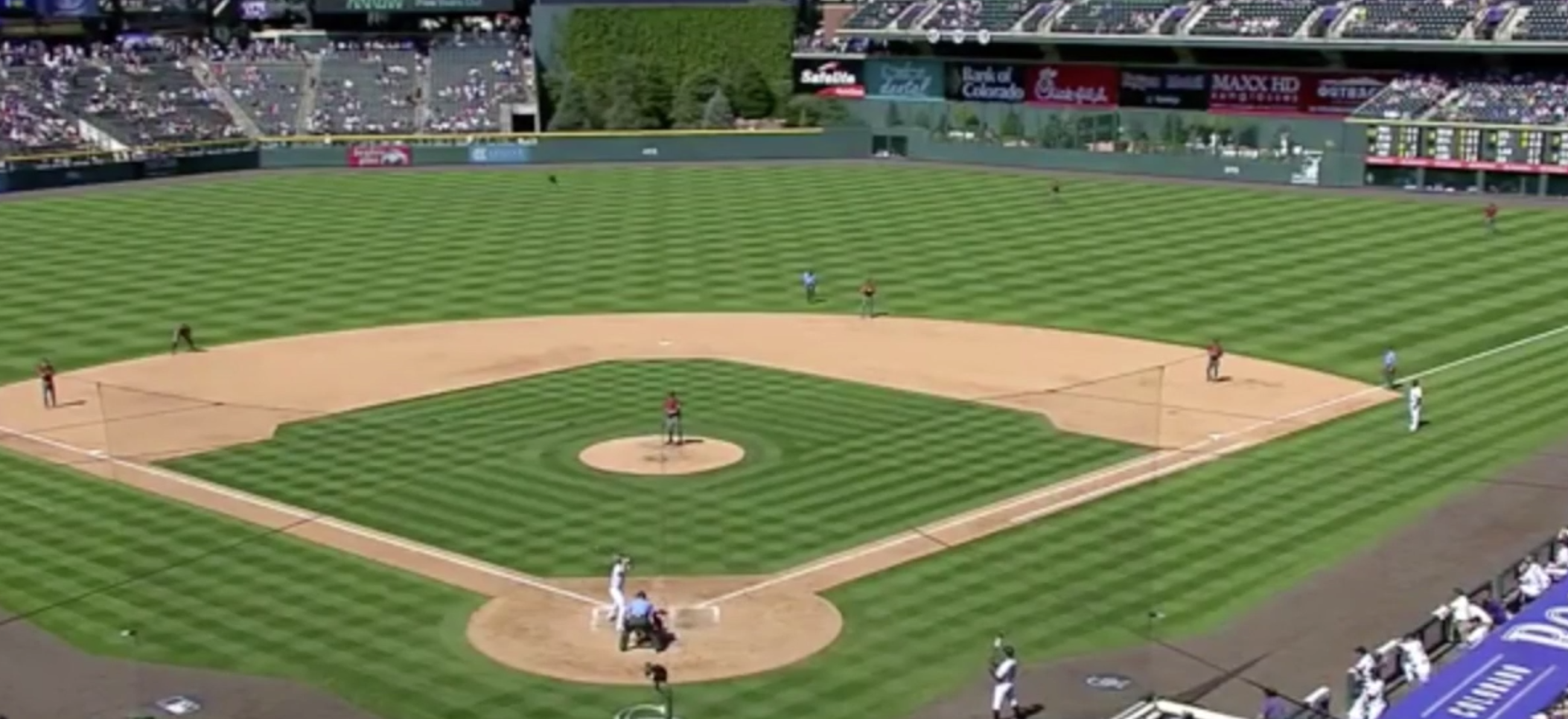For most of his professional career, now in its 10th season, Christian Villanueva has been largely irrelevant.
He appeared on Baseball America’s top-100 list in 2012 — but as the last player on that list.
He was the “other guy” in the deal the that sent Kyle Hendricks — and Villanueva — from the Rangers to the Cubs for Ryan Dempster on July 31st, 2012.
While putting together a solid 2013 season in Double-A, he observed as the Cubs selected University of San Diego third baseman Kris Bryant with the second overall pick in the June draft. While Bryant was a level or two behind Villanueva in 2013 and 2014, the former soon passed the latter en route to the majors.
As Bryant was fashioning a Rookie of the Year campaign in 2015, Villanueva slashed .259/.313/.437 in Iowa with 18 home runs over 508 plate appearance as a 24-year-old in Triple-A. Not only was he blocked, but he wasn’t performing like someone who appeared to be a future regular. In 2016, he suffered a broken leg and missed the entire season.
At the end of the 2016 season, with seemingly no place for him in the Cubs’ infield or on their 40-man roster, Villanueva was granted free agency. He signed a minor-league deal 10 days later with the San Diego Padres.
At that point in time, Villanueva wasn’t particularly relevant in baseball circles. He wasn’t particularly relevant last season, either, when he slashed .296/.369/.528 with 20 homers in Triple-A, a trying year personally after his brother died in the spring.
He was a relative unknown for the first nine years of his professional career. That’s changed early this season.
A player with whom few were acquainted a month ago now leads baseball in wRC+ (236) among hitters with 70 or more plate appearances and is eighth in WAR (1.4) as the season approaches May.
He got our attention early with a three-homer game on April 3rd.
As seen here:
https://gfycat.com/MiserablePhysicalAdouri
And here:
https://gfycat.com/UniformWellgroomedDairycow
And here:
https://gfycat.com/VapidRewardingEuropeanpolecat
Villanueva doesn’t have exceptional exit velocity like his teammate Franchy Cordero, the latter perhaps representing the greatest curiosity in the majors. He ranks 193rd in exit velocity on fly balls and line drives early this season, according to Baseball Savant.
But he is doing several things unusually well.
For starters, he’s been air-balling since before air-balling was a thing. The only time Villanueva hit more ground balls than fly balls at a professional stop was in Rookie ball in 2009. Villanueva has the 23rd-lowest ground-ball rate (29.3%) in the sport.
His average launch angle of 19.4 degrees ranks ranks 30th and his 11 launches between 20 to 30 degrees ranks 30th, as well.
And it’s not just that he’s putting balls in the air, it’s where he’s directing them: to his pull side and in an extreme way.
As you’ll notice in the above clips, he’s even been able to hook breaking balls on the outside part of the plate over the left-field wall in a Gary Sheffield sort of way. He’s covering the whole plate and with power.
Villanueva leads the majors in pull percentage on fly balls and line drives (62.1%) and that’s in large part why he ranks first in the majors with a 36.8% HR/FB rate.

Can he continue to pull fly balls and line drives at such a rate? It’s rare. Since 2007, only 37 batters have accomplished it, including the aforementioned Sheffield twice.
If he can, he’s interesting. This isn’t just a bat-only corner bat, it’s one that plays third and one with which the Padres have even considered experimenting at shortstop.
Might this be for real?
It’s a unique batted-ball profile, one that should lend itself to constant home-run power so long as he can make contact and pull air balls. Another key is that Padres manager Andy Green said Villanueva has tightened up his strike zone.
“It’s been great to see Villa make the adjustments he’s made,” Green said. “When he got to the point where he was swinging at everything, you know that’s not going to play well in the long run. Seeing him make that adjustment, be a bit more patient, means more to me than seeing him hit three homers in a game.”
Maybe Green is seeing something from dugout level, but Villanueva doesn’t seem patient by the numbers: he’s swinging at out-of-zone pitches at 40% rate. While he never had major contact issues in the minors, he’s striking out on 30% of his plate appearances thus far in the majors. He has a swinging strike rate of 17.4%.
While he’s crushing fastballs and changeups, he’s swinging through an awful lot of curveballs and sliders. He’s not going to continue to see fastballs at a 56% rate.

If there isn’t yet a book on Villanueva, one is being written by opponents as we speak. He’ll have to make some adjustments now that he’s no longer a secret, now that he’s no longer irrelevant.





